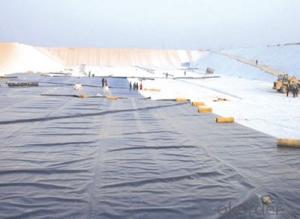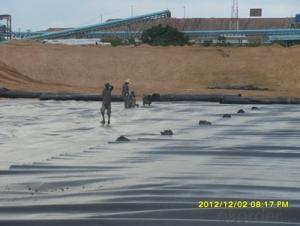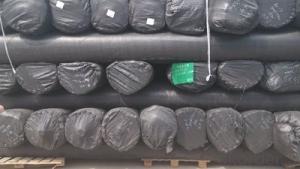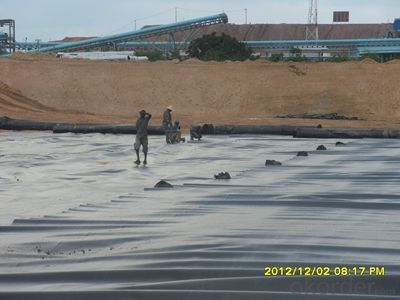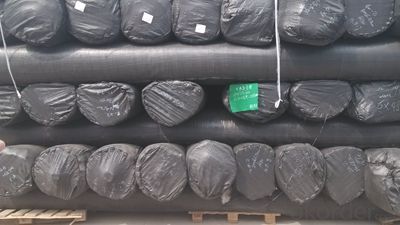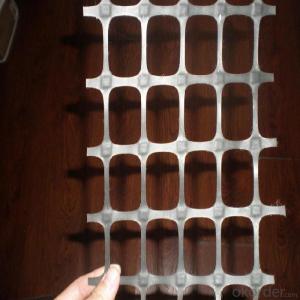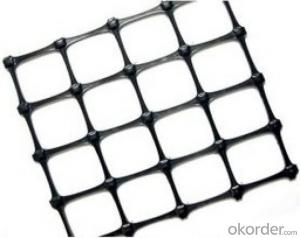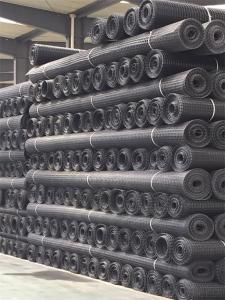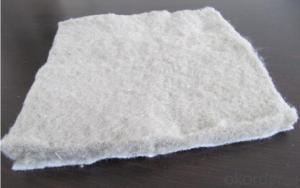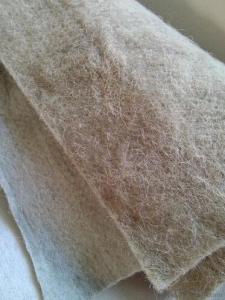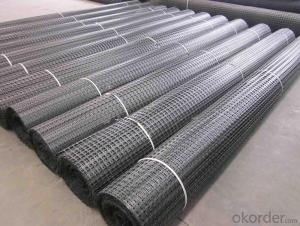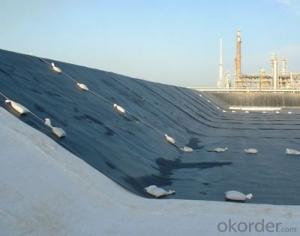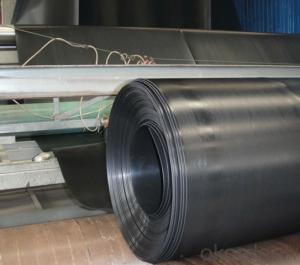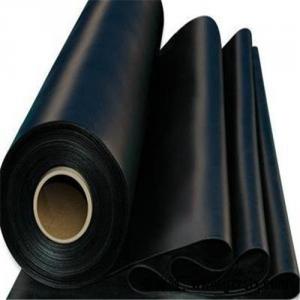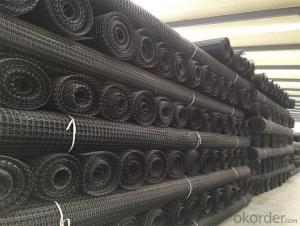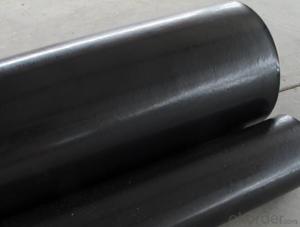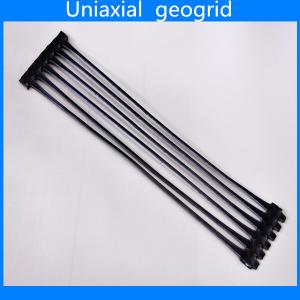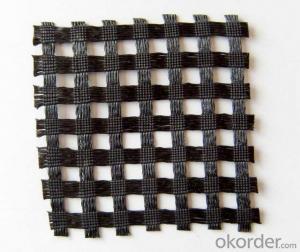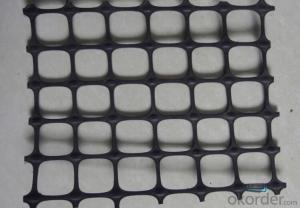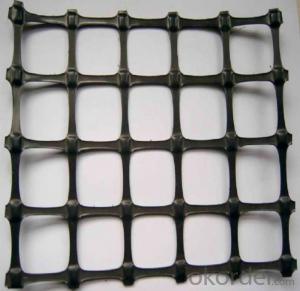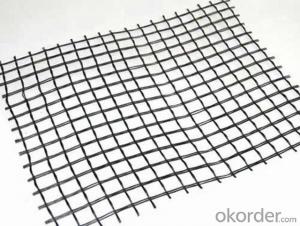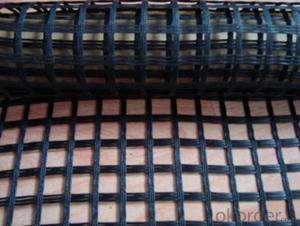Fibreglass Geogrids Reinforced HDPE Geomembrane for Environmental, Water Conservancy, Landfill, Mining, and Canal Projects
- Loading Port:
- Tianjin
- Payment Terms:
- TT OR LC
- Min Order Qty:
- 88 m²
- Supply Capability:
- 1800000 m²/month
OKorder Service Pledge
OKorder Financial Service
You Might Also Like
Introduction of CNBM
China National Building Materials (Group) Corporation (CNBM) is a state-owned enterprise in charge of administrative affairs in China building materials industry. Established in 1984, CNBM is a large group corporation of building materials with total assets of RMB 25 billion and a total staff of 30,000. Now CNBM owns more than 200 subsidiaries in and abroad the country, including wholly-owned corporations and joint ventures.
FAQ of geosynthetics :
What is geosynthetics ?
Geosynthetics form a perfect erosion control fabric used extremely widely in civil engineering to stabilize and reinforce slopes and soil under or next to roads, railways, dams, water reservoirs etc.. They can be easily applied which minimizes the time of construction, as well as they limit the resources and materials necessary.
What kinds of geosynthetics we have ?
Non-woven geotextile, geogrids, geocells, GCL, Geomembranes, Geonets, Geocomposites etc .
What is the geosynthetics used for ?
Hydraulic
Lagooning and Water Treatment, Ornamental Ponds, Golf Courses
Aquaculture and Desalination,Water Lagoons,Tanks, Reservoirs, Liquid Waste,Floating Cover Solutions, Drainage and Filtration
Environment
Tailing ponds, Leach mining,Landfills,Landfill Capping,Protection against corrosion,Vertical Barriers
Civil Works
Erosion Control,Secondary Containment,Tunnels,Linear and Surface Works,Consolidation of Margins,Soil Reinforcement,Soil Separation.
Building - Parkings,Roofing,Soundproofing
The description of HDPE Geomembrane for Environmental Projects water conservancy projects landfill mining canal
Geomembranes are impermeable geosynthetics that, until recently, were mainly used as canal and pond liners. However, modern technology has broadened liner applications to include landfills, wastewater treatment lagoons, oil and gas exploration (including hydraulic fracturing or "fracking"), aquaculture, irrigation ponds and remediation. In many of these applications, a nonwoven geotextile is used as a cushion to protect the geomembrane. In general, geomembrane liners offer excellent puncture resistance and can withstand a wide range of chemicals and temperatures. They are also highly flexible and conform well to the subgrade.

Specification of HDPE Geomembrane for Environmental Projects water conservancy projects landfill mining canal:
I. Thickness: 0.3mm-3. Omm
2.4m-9m in roll width, the length as client ' s request
Features or Property of HDPE Geomembrane for Environmental Projects water conservancy projects landfill mining canal:
I. Good flexibility
2. For service temperature range: -700C-+1IOoC
3. Corrosion resistance, aging resistance
4. Excellent environmental stress cracking resistance property
5. High tensile strength and elongation
Application of HDPE Geomembrane for Environmental Projects water conservancy projects landfill mining canal:
I. Municipal environmental projects, water conservancy projects
2. Landfill cap(closures), mining heap leach pads
3. Pond liner, canal linings, tank linings, raw water treatment reservoirs, retention ponds
4. Waste water treatment lagoon, secondary containment
Production standard:
I. GB/T17643-2011
2. CJ/T234-2006
3. GRI-GM13
Area |
|
Hydraulic | Lagooning and Water Treatment, Ornamental Ponds, Golf Courses Aquaculture and Desalination Water LagoonsTanks, Reservoirs, Liquid WasteFloating Cover SolutionsDrainage and FiltrationShading Cover Solutions |
Environment | Tailing ponds, Leach mining,Landfills,Landfill Capping,Protection against corrosion,Vertical Barriers |
Civil Works | Erosion Control, Secondary Containment, Tunnels,Linear and Surface Works,Consolidation of Margins,Soil Reinforcement,Soil Separation. |
Building | Parkings,Roofing,Soundproofing building |
- Q: How do geogrids improve the performance of mechanically stabilized slopes?
- Geogrids improve the performance of mechanically stabilized slopes by providing reinforcement and increasing the stability of the soil. They act as a tensile element, distributing the loads and reducing the potential for soil movement. Additionally, geogrids enhance the bearing capacity of the soil, prevent lateral spreading, and minimize deformation, thereby improving the overall stability and longevity of the slope.
- Q: Can geogrids be used in reinforcement of bridge abutments on soft clays?
- Yes, geogrids can be used in the reinforcement of bridge abutments on soft clays. Geogrids are commonly used in geotechnical engineering to improve the stability and strength of soil structures. In the case of bridge abutments on soft clays, geogrids can provide lateral reinforcement and enhance the load-bearing capacity of the soil, reducing settlement and improving overall stability.
- Q: What factors should be considered when selecting a geogrid?
- When selecting a geogrid, several factors should be considered. Firstly, the intended application and the specific requirements of the project play a crucial role. Different geogrids are designed for various purposes such as soil stabilization, reinforcement, or erosion control. Secondly, the strength and durability of the geogrid are important considerations. The material composition, tensile strength, and resistance to environmental factors like UV radiation or chemicals should be evaluated. Additionally, the installation process and ease of handling the geogrid should be taken into account. Lastly, cost-effectiveness and the long-term performance of the geogrid should be considered to ensure an optimal selection.
- Q: How do geogrids improve the bearing capacity of foundations?
- Geogrids improve the bearing capacity of foundations by increasing soil stability and reinforcement. They act as a mesh or lattice-like structure that is placed within the soil, distributing the load more evenly and preventing soil from shifting or settling. This helps to reduce settlement and improve the overall strength and stability of the foundation.
- Q: What are the different materials used to manufacture geogrids?
- Geogrids are typically manufactured using a variety of materials such as polyester, polypropylene, high-density polyethylene (HDPE), and fiberglass. These materials are chosen for their strength, durability, and resistance to environmental factors such as chemical exposure and UV radiation. Each material has its own unique properties, making it suitable for specific applications in geotechnical engineering and soil stabilization projects.
- Q: One-way plastic geogrid TGDG120 how qualified
- One way plastic geogrid is mainly used in Subgrade Reinforcement Engineering
- Q: Can geogrids be used in reinforcement of embankments on collapsible soils?
- Yes, geogrids can be used in the reinforcement of embankments on collapsible soils. Geogrids provide additional stability and strength to the embankment, helping to prevent soil collapse and reduce potential settlement. By distributing loads more evenly, geogrids can effectively reinforce the embankment and improve its overall performance on collapsible soils.
- Q: Are geogrids suitable for use in mechanically stabilized bridge abutments?
- Yes, geogrids are suitable for use in mechanically stabilized bridge abutments. Geogrids provide reinforcement and stability to the soil, allowing for increased load-bearing capacity and reduced settlement. They are commonly used in bridge abutments to improve the overall performance and longevity of the structure.
- Q: Can geogrids be used in reinforcement of mechanically stabilized earth bridge abutments?
- Yes, geogrids can be used in the reinforcement of mechanically stabilized earth bridge abutments. Geogrids are commonly used in geotechnical engineering to enhance the stability and strength of soil structures, such as bridge abutments. They provide tensile strength and distribute loads, improving the overall performance and longevity of the structure.
- Q: What is the recommended overlap for geogrid installation?
- The recommended overlap for geogrid installation typically varies depending on the specific project and soil conditions. However, a common guideline is to have a minimum overlap of 1-2 feet (30-60 cm) for proper stability and load distribution. It is always best to consult the manufacturer's recommendations or seek professional advice for specific installation requirements.
Send your message to us
Fibreglass Geogrids Reinforced HDPE Geomembrane for Environmental, Water Conservancy, Landfill, Mining, and Canal Projects
- Loading Port:
- Tianjin
- Payment Terms:
- TT OR LC
- Min Order Qty:
- 88 m²
- Supply Capability:
- 1800000 m²/month
OKorder Service Pledge
OKorder Financial Service
Similar products
Hot products
Hot Searches
Related keywords
